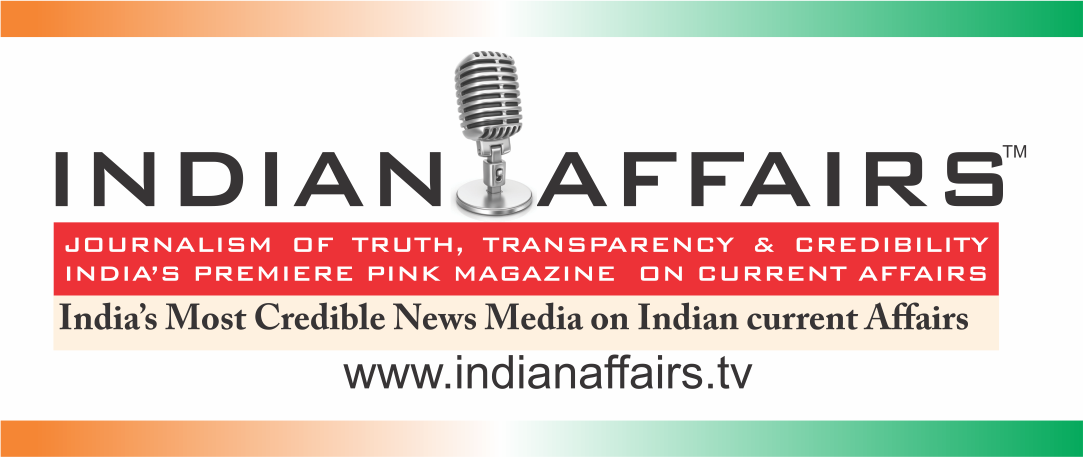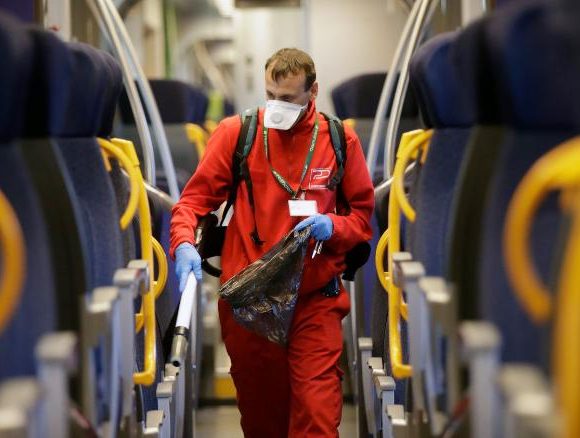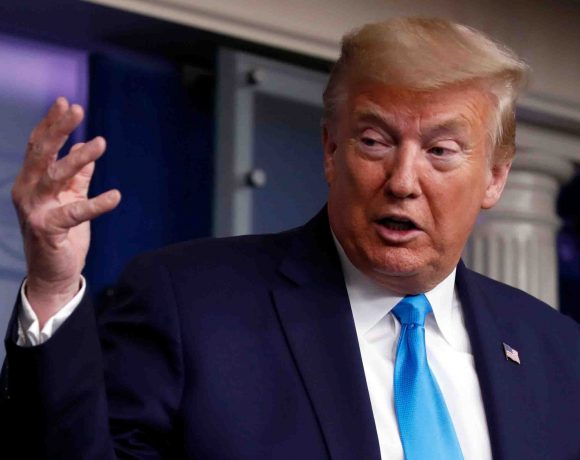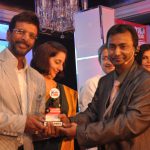

Toronto: Just as the organizers had advertised, Prime Minister Narendra Modi’s public interaction with the Indian diaspora at Ricoh Coliseum in Toronto on Wednesday had all the trappings of a rockstar concert as Bollywood singer Sukhwinder Singh, Shiamak Davar troupe and other groups set the tone for the evening.
Taking his warm personal friendship with Prime MinisterNarendra Modi a step ahead, US President Barack Obama has written a profile of Modi, titled ‘India’s reformer-in-chief’, for TIME Magazine. He writes that Modi’s life story — his rise from poverty to become India’s prime minister — is symbolic of the country’s dynamism and potential. “As a boy, Narendra Modi helped his father sell tea to support their family. Today, he’s the leader of the world’s largest democracy.”. Recalling the Indian prime minister’s visit to Washington, Obama writes: “Narendra and I visited the memorial to Dr. Martin Luther King Jr. We reflected on the teachings of King and Gandhi and how the diversity of backgrounds and faiths in our countries is a strength we have to protect.” Obama adds that Modi recognised a billion Indians living and succeeding together could become a model for the entire world. Barack Obama
The nearly 10,000-strong audience interrupted Modi repeatedly during his hour-long speech with shouts of “Modi, Modi…” as the prime minister spoke about the changes sweeping India.
Speaking in Hindi in the presence of Canadian Prime Minister Stephen Harper and his cabinet colleagues, Modi repeatedly stressed, “Sarkar naahi badli, jan manas badla hai dus mahine main (It is not that the government has changed, but it’s people’s thinking that has changed during the last 10 months)”.The nearly 10,000-strong audience interrupted Modi repeatedly during his hour-long speech with shouts of “Modi, Modi…”
In the new atmosphere, Modi said, people were responding with enthusiasm to new ideas whether it was his Clean India Mission, or bank accounts for the poor or gas subsidy.Modi said celebrities joined the Clean India Mission on their own, poor people deposited Rs.14,000 crore in their newly opened accounts and rich people are giving up their gas subsidy so that the poor can be helped. “Modi has done nothing…it is the common man in India who has changed,” the prime minister said.There were rounds of cheers every time he took a dig at the previous regime.
But the prime minister drew the biggest applause when he said his mission is “Skill India while theirs was Scam India”.People cheered him when the PM, while referring to his mission to clean India and root out corruption, said in Hindi, “Jinhone gandgi karni thee, woh kar ke chale gaye. Lekin hum safai kar ke jayenge (Those who created scams and dirt have now gone, we will clean up the mess”.
Understanding Namonamonics. Why Narendra Modi is a hit on foreign soil?reports@@Indian_Affairs @narendramodi pic.twitter.com/4Npl0G5caw
— SATYA BRAHMA (@SATYABRAHMA) April 16, 2015
The Prime Minister said development is the cure to all problems faced by India. He said India’s demographic dividend represented a huge asset, and 80 crore youth were the focus of all his policies. He spoke of his Government’s vision and emphasis on skill development, and the importance of instilling a sense of “dignity of labour” in India. He added that this would ensure that India can become a major global supplier of skilled manpower. He said that just as “Jan-Mann” had changed, the attitudes of the youth had also changed, and youth were now willing to work hard – they just needed to be given the right opportunities. He said India needed to produce job-creators, not job seekers. The Prime Minister spoke of the MoU signed with France, that would allow components of nuclear power plants to be built in India. He said those power plants could perhaps, one day, be energized using Uranium that would come from Canada. He said this was a big step in enhancing clean energy production in India. This would enable one-sixth of humanity to make a contribution to protect the environment, he added.
Text of PM’s address at the Indian Diaspora Event, at Ricoh Coliseum, in Toronto, Canada
Modi said his government was working on his four-pronged dream symbolizing the four colours in the Indian flag – saffron, white, green and blue (the colour of the Ashok Chakra in the flag). “Saffron means energy (revolution, white means the second white (nilk) revolution, green means the second green revolution and blue means clear blue sky through new manufacturing process which don’t impact the environment,” Modi said.
The prime minister wondered why the likes of Google and Microsoft cannot be created in India when Indian IT specialists are playing an important role in these tech giants. “We have undertaken to promote innovation in India through the Atal Innovation Mission and skill development through our Skill India mission,” he said.
Modi said the two biggest achievements of his visits to France and Canada were the signing of a deal in France for manufacturing nuclear reactors in India and the supply of uranium from Canada. “These two agreements will help India become a big contributor to clean energy in the world.”
Modi, on the last leg of his three-nation tour, thanked his Canadian counterpart for his hospitality. “Today, we started a new era of cooperation between our two countries and it will last very long. Canada has all the resources India needs.”
Lauding the Indian diaspora in Canada, Modi urged them to contribute to their ancestral land. The OCI and PIO cards have been merged and the new OCI card will be for life and available to people of Indian origin up to their fourth generation, the prime minister said.
Earlier, Canadian Prime Minister Stephen Harper introduced Modi to the gathering. “Under your leadership, Canada feels closer to India than any time before,” Harper said.
“We had extended a hand of friendship (to Modi) long before others,” the Canadian leader said, referring to Canada’s participation in the annual Vibrant Gujarat summit launched by Modi as chief minister in 2003.
Canada unveils deal to supply uranium to India during PM Narendra Modi’s visit
Prime Minister Narendra Modi (L) with Canadian Prime Minister Stephen Harper (Photo: Reuters)
The Canadian government on Wednesday unveiled a 350 million Canadian dollars (US $280 million) deal to supply uranium fuel to India, formally ending a long-running dispute that began after the government used Canadian technology to develop a nuclear bomb.Canadian producer Cameco Corp will supply 7.1 million pounds (3.22 million kilograms) of uranium concentrate to the country over the next five years. The deal is Cameco’s first with India, which the firm called the second fastest growing market for nuclear fuel. Shares in the uranium miner rose 5.8 per cent in Toronto.”Canada is providing uranium to India as a mark of its trust and confidence in India,” Prime Minister Narendra Modi told a news conference during his official visit to the North American country.
Canada banned exports of uranium and nuclear hardware to India in the 1970s after the government used Canadian technology to develop a nuclear bomb.The two countries started to put the dispute behind them with a cooperation deal in 2013 that let Canadian companies export controlled nuclear materials and equipment subject to safeguards applied by the International Atomic Energy Agency (IAEA).
“(That agreement) really allowed us to turn the page on what had been in our judgment an unnecessarily frosty relationship for far too long,” Canadian Prime Minister Stephen Harper told the news conference.
Modi has made nuclear power a key element of his clean energy strategy. The country needs foreign nuclear technology and fuel to ramp up capacity by a planned 14 times from 4,560 megawatts over the next two decades.
The two prime ministers also said they wanted to boost bilateral trade, which currently sits at a modest 6.3 billion Canadian dollars a year, and revive stalled talks on a free trade agreement.
“It (trade) is not where we want it to be but it is growing,” said Harper.Modi arrived in Canada on April 14 for the first bilateral visit by an Indian prime minister in 42 years.
Around 1.2 million Canadians – just under 4 per cent of the population – have ties to the country as either immigrants or their descendants. They form an important voting block in cities like Toronto and Vancouver.Canada’s ruling Conservatives – facing a tough election in October 2015 – have tried hard to build ties with the Indian community and Harper will appear with Modi at public events in both Toronto and Vancouver. (Reuters)
THE X FACTOR of MODI
For two countries that Prime Minister Stephen Harper calls “natural partners” in a new global economy, Canada and India might appear to share a rather meek business relationship.
Not even one per cent of Canadian exports currently ship to India, with goods exports around $3.1 billion in 2014 — less than one-sixth what Canada exports to China. Promising to open India to global commerce, Indian Prime Minister Narendra Modi’s historic three-day Canadian tour this week seeks to change that His trip ends a 42-year dry spell since a head of state from the world’s largest democracy visited to talk bilateral relations. As Harper pushes for a free-trade pact with Modi, Canadian economists and business leaders representing South Asian professionals lay out their case for why India is a social, political, cultural and economic force that matters.
1. A hot opportunity
“Let’s not forget there’s a race to get to India’s door,” says Jaswinder Kaur, director of the Canada-India Centre of Excellence in Ottawa.
“We’re competing against Japan, the French, the Australians, and this is an opportunity for Canada to demonstrate how we can contribute and make a true partnership.”
India’s Prime Minister Narendra Modi was elected partially on the promise that he would open India up to global commerce. (Toru Hanai/Reuters)
Canada’s Global Markets Action Plan identified India as a priority market, with a burgeoning economy and roughly 11 million people under 30 entering the workforce each year.
India has for years remained the largest market for Canada’s pulses (grain legumes such as lentils and peas), and Canada also supplies lumber and potash.
“But are Canadian companies ready to do business?” Kaur says. “That’s where the real work is going to begin.”
The International Monetary Fund projects that by 2016, India’s GDP growth will outpace that of China’s becoming the fastest-growing major economy in the world.
In the meantime, two-way bilateral trade has grown to $6 billion, up 47 per cent since 2010, when trade was around $4.09 billion.
2. Energy demands
Much has been made, Kaur notes, of Modi “shopping for uranium” as part of this Canadian tour.
India needs the radioactive element to feed its nuclear reactors, and Canada has a vast supply.
‘Mr. Modi will be looking for a signed contract for Canada to be a supplier of uranium, as India desperately needs energy as it expands.’- Elliot Tepper, Carleton University South Asian studies professor
If Ottawa allows, Saskatchewan-based Cameco Corp. could resume uranium exports to India following a ban 40 years ago, when India was accused of testing a nuclear weapon in 1974, and then again in 1998, using Candu technology supplied by Canada.
“Since then, our relations have slowly climbed back up to the point where we have a nuclear agreement,” said Elliot Tepper, a South Asian studies professor at Carleton University.
“Mr. Modi will be looking for a signed contract for Canada to be a supplier of uranium, as India desperately needs energy as it expands, and wants to rely more on nuclear power.”
Meanwhile, Canadian natural gas and oil will continue to be useful resources to India.
3. Young population
The under-35 demographic represents more than 65 per cent of India’s population, and many of them are migrating from rural areas to cities searching for education and employment, both of which Canada can help supply.
Open for business. India’s Prime Minister Narendra Modi addresses the world’s largest industrial technology fair, the Hannover Messe, in Hanover, Germany, earlier this month. He has been on something of a world tour, trying to drum up industrial investment in job-hungry India. (Reuters)
Modi’s “Make in India” initiative is encouraging international firms to set up manufacturing plants in India to spur job creation at home and become a low-cost alternative to China.
Flipping the saying that China will grow old before it grows rich, Gary Comerford, president of the Canadian Indian Business Council, believes “India will grow wealthy before it grows old.”
Over the last decade, he says, a large number of Indians have “pulled themselves out of poverty” and into a rising middle class.
“And that means they’re consuming,” Comerford says of the next generation of big spenders. “They’re getting a fridge, a TV, a cellphone.
“If you take that sheer population of 1.2 billion and convert it into a consuming group, as well as being an economic powerhouse, it will be a political powerhouse as well.”
4. Cross-cultural understanding
India remains a democracy with a “remarkably pluralistic society,” which Canada can appreciate as a state that welcomes diversity as a foundation of the country, says Tepper.
Two business-friendly PMs, India’s Narendra Modi and Canada’s Stephen Harper chat at the G20 summit in Australia in November. (The Canadian Press)
“That makes our two countries both natural allies and rather special in terms of the states of the world,” he says, adding that the two countries have worked together quietly for years on such things as counter-terrorism and sharing concerns about violent extremists.
University of Toronto professor Kanta Murali, who analyzes Indian politics at the Centre for South Asian Studies, points to a 1.2 million-strong Indian diaspora in Canada as “central to the excitement surrounding Modi’s visit.”
A shared history under British colonial rule, a broadly English-speaking population and a democratic system add to a sense of kinship, adds Comerford.
5. A knowledge economy
According to Dherma Jain, president of the Indo-Canada Chamber of Commerce, more than 15,000 Indian students have decided to pursue foreign studies at universities and colleges in Canada.
Modi’s visit is expected to seal some educational co-operation agreements such as twinning programs, Tepper said.
“Canada will be providing expertise that India invites as it wants to upscale its own capacity, from technology to agriculture, and attracting people to come to Canada instead of going elsewhere,” he said.
India is interested in harnessing green tech as well, notes Karunakar Papala, chairman of the Indo-Canada Ottawa Business Chamber, which represents some 600 business owners in the capital.
Modi’s plan for India to develop 100 high-tech “smart cities” that are more energy and resource efficient, could benefit from Canadian know-how. (The Indian prime minister made a similar pitch when he visited Germany recently.)
“Solar technologies, green technologies, Canada has got a lot to offer there,” Papala said.
Narendra Modi visit: The elaborate marketing strategy behind the Indian PM’s rock-star status
Modi arrives Tuesday in Ottawa, will also visit Toronto and Vancouver
On Sep. 28, 2014, a grey-bearded, bespectacled man in a saffron jacket was welcomed onstage at New York’s Madison Square Garden to a packed stadium. A crowd of 18,000 people was chanting his name. And to them, he said, “I have a dream.”
The man was Narendra Modi — Indian prime minister and so-styled rock-star politician.
Modi was, of course, channelling Martin Luther King Jr.’s famous “I Have a Dream” speech and the crowd of Indian-Americans loved it. The event amplified his larger-than-life stature that had propelled him to victory in the 2014 Indian general election.
ANALYSIS | India election: The promise and challenges facing new leader Narendra Modi
India’s Narendra Modi feted after landslide election win
Since Modi’s Bharatiya Janata Party came to power with a historic majority, he’s commanded attention and adoration around the world. World leaders — Barack Obama, Xi Jinping, Vladimir Putin — have queued up to woo him.
‘He incarnates the American dream.’
– Mathieu Boisvert, Centre for Studies and Research of India, South Asia and its Diaspora
Canada, too, is set to get its share of Modi when he lands in Ottawa on Tuesday for a three-day tour, visiting also Toronto and Vancouver.
But the global fervour over Modi — or as it’s been dubbed by some, the Modi Wave or TsuNaMo — is a carefully orchestrated marketing campaign years in the making, say experts, and masks some potentially troubling elements of his leadership of the world’s largest democracy.
Delivered on change
Modi, known as a Hindu nationalist, was chief minister of Gujarat (one of India’s most industrialized states) before becoming prime minister. During Modi’s tenure from 2001 to 2014, Gujarat saw rapid growth. The economy expanded by about 10 per cent a year between 2004 and 2012 — above the Indian average of about 8.5 per cent. It laid the foundation for his political success.
Modi drove the state forward “to a remarkable degree” according to Lance Price, the British author of The Modi Effect: Inside Narendra Modi’s Campaign to Transform India.
INDIA/
Supporters of Bharatiya Janata Party wear masks of Modi and celebrate ahead of his swearing-in ceremony in Mumbai in May 2014. (Danish Siddiqui/Reuters)
“He promised 24/7 electricity to the whole state, which he pretty much delivered on. He built roads. He improved infrastructure dramatically,” said Price.
“If he actually hadn’t delivered change that people could sense on the ground … then he wouldn’t have been able to spin it as a personal achievement because nobody would’ve believed it.”
While quantifiable economic targets may be hard to spin, personal history — the stuff of legends — is not.
Rags to riches
Modi’s rise to power is the classic rags-to-riches story. As a young boy, he helped his dad serve tea at a railway station in Gujarat.
“Here, we’re talking about foundation myth,” says Mathieu Boisvert, director of the Centre for Studies and Research of India, South Asia and its Diaspora at the University of Quebec in Montreal.
“He incarnates the American dream.”
That myth, says Boisvert, was orchestrated in part by comic books about Modi’s life the BJP released a couple of years before the 2014 election. It installed in people’s imaginations a “myth that the guy is benevolent, that he was a nobody, and because he was hard-working, because he was dedicated to his parents, because he was religious, he became where he is.”
“I’m not saying that he didn’t work, but that there is a very strong marketing infrastructure behind the man,” he said, which helped him get resounding success across India and pushed his Gujarat economic model to the forefront.
‘He never ever considers failure an option.’
– Lance Price, author of The Modi Effect
Modi’s economics (“Modi-nomics”), though, could be at odds with his Hindu nationalist politics.
He came under heavy criticism for anti-Muslim riots in Gujarat in 2002 that left more than 1,000 people, mostly Muslims, dead. The then-chief minister was accused of doing little to stem the violence, the latest eruption of long-running tension between Hindus and Muslims in India.


















